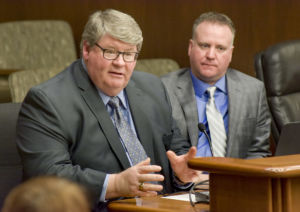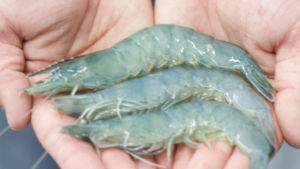Millions in State Subsidies for MN Shrimp Industry?

Shrimp for 69 cents a pound anyone? That would be quite a bargain for sea food lovers. But not so much for taxpayers. Yet that’s how much some legislators want Minnesotans to pay in order to get shrimp farming off the ground in the state—69 cents a pound.
Bills authored by Rep. Chris Swedzinski (R-Ghent) and Sen. Bill Weber (R-Luverne) appropriate up to $5 million a year in what amounts to commodity payments for shrimp producers. The not-so-shrimp-sized subsidy would sunset in five years and require producers to use feed pellets produced within 100 miles of their operations.
Yet the business group seeking taxpayer support appears to have projected a potential 99 percent return on investment in year three in a presentation made to the Agricultural Utilization Research Institute (AURI) in Willmar in 2015.
Why shrimp farming in Minnesota? Company representatives told House committee members “this is where the feed is.”
Planning is already underway for a facility near Marshall that would cover several acres and produce 153 million shrimp each year. And those behind legislation approved by the House Agriculture Policy Committee Wednesday believe it could help Minnesota become a global leader in shrimp farming.
Shrimp farms in the heartland may or may not be a good idea. But since when do conservatives obligate taxpayers to be in the business of funding start-up industries?
“We’re going to build a completely new industry in Minnesota,” Michael Ziebell, general manager of Tru Shrimp Systems said. “We have a chance to absolutely dominate shrimp aquaculture. Nowhere in the world has something like this ever been done.”
Lawmakers should play a vital role in attracting entrepreneurs and improving the state’s business climate. Not by doling out tax dollars but by reducing expensive regulations and taxes that make Minnesota less competitive than our neighboring states.
But some legislators have gotten into the habit of reaching for their constituents’ wallets instead.
Ziebell said the incentive payments would “mitigate the risk for investors” and cited an economic impact study his company had commissioned from the University of Minnesota that estimated building the facility would create a $48 million contribution to five surrounding counties: Cottonwood, Lyon, Murray, Nobles and Redwood.
The study also showed that ongoing operation of the facility would contribute another $30 million per year and Ziebell told the committee similar facilities could be built in any part of the state.
Minnesota may well become the global leader in the shrimp industry that supporters claim someday. But taxpayers should not be required to be silent partners in the fledgling industry’s business plan.
